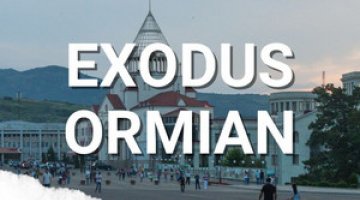The third Karabakh war

At noon on 19 September, Azerbaijan launched a ‘local anti-terrorist operation’ against the unrecognised Nagorno-Karabakh Republic; this took the form of massive air and artillery attacks on military installations in the para-state, together with ground operations whose scope at this point is difficult to define (in the morning of 20 September there were unconfirmed reports of fighting in the outskirts of Stepanakert, the capital of Karabakh). The formal aim of the operation was to destroy the armed forces of both the Karabakh Armenians and the Republic of Armenia whom Baku holds responsible for carrying out sabotage activities against Azerbaijan; the ultimate goal is to restore constitutional order in the uncontrolled region. Additionally, as the hours passed, Azerbaijan also demanded the surrender of the armed forces in Nagorno-Karabakh and the dissolution of the para-state’s structures of government. Azerbaijan reports that dozens of military facilities and targets have been destroyed; civilian losses are difficult to estimate. The operation enjoys the full support of Turkey (as shown in statements by its defence minister, and later by President Recep Tayyip Erdoğan).
The Russian contingent of the peacekeeping forces adopted a passive stance in the face of the escalation: it was informed of the attack just before it began, and is currently participating in the evacuation of civilians. According to unconfirmed reports, Azerbaijani forces shelled its facilities. The Russian MFA called on the parties to negotiate without actually defining them.
Armenia rejected allegations that it was maintaining a military presence in Nagorno-Karabakh, while in a statement to the nation Prime Minister Nikol Pashinyan condemned the attack and warned against ethnic cleansing. He insisted that Armenia would not be drawn into the conflict, and cautioned against the threat of organising a coup in the country. The Armenian foreign ministry unsuccessfully demanded that Russian forces in Nagorno-Karabakh fulfil their commitments to ensure compliance with the truce. On 19 September, tumultuous demonstrations began in Yerevan, during which both anti-government and anti-Russian slogans were used (the Russians are alleged to have been too passive in the face of the attack). The Armenian security forces appear to have successfully suppressed the demonstrations for the time being.
Azerbaijan’s attack has been condemned and Baku itself urged to cease hostilities by the EU (Charles Michel, President of the European Council) and the US (led by Secretary of State Antony Blinken), among others; France has traditionally adopted a strongly pro-Armenian stance.
Commentary
- The state of limbo around Nagorno-Karabakh had been in place since the 2020 war, which Azerbaijan won: Armenian forces were thoroughly defeated, and the territory of the para-state was reduced by about two-thirds. The ceasefire was overseen by Russian forces (numbering up to 2000 troops) and Turkish observers, who had a five-year mandate. Armenia’s influence was reduced to a minimum. Both Armenia and Nagorno-Karabakh were subjected to strong pressure from Azerbaijan, which pushed for a favourable solution to the conflict: in the case of Nagorno-Karabakh, Baku was aiming at the complete elimination of its separate status. In recent months, political and military pressure and an effective communication blockade between Armenia and Nagorno-Karabakh have led to a fundamental erosion of Karabakh’s structures of governance. The Armenian government has consistently distanced itself from Nagorno-Karabakh, but remain pressured by concerns about the future of the para-state’s Armenian community and its cultural heritage. Yerevan is also involved in the process, mediated by the EU and the US, of normalising relations with Azerbaijan; this involves attempts to loosen Armenia’s dependence on Russia.
- Azerbaijan’s attack on Nagorno-Karabakh, which has been significantly weakened in recent months, appears to be aimed at further destroying the military potential of the Armenians there and, in the maximum variant, at regaining control of the entire region. It is also a further instrument of pressure on Yerevan to completely separate Armenia from the para-state and to accept peace terms that are optimal for Baku. One circumstance that seems to favour Baku is the growing tension between Russia and Armenia, which may explain the passivity of the Russian contingent in Nagorno-Karabakh so far; it could also potentially build up Yerevan’s isolation and its willingness to make concessions in the peace process.
- Developments during the first day of the conflict indicate that Azerbaijan is willing and able to seize key points in Nagorno-Karabakh and effectively dismantle the para-state. Regardless of the extent of Azerbaijan’s success, the risk of a mass exodus of the Armenian population – out of legitimate fear for their safety – is very high. Russia’s attitude remains unclear: on the one hand, the current clashes and even more so the liquidation of Nagorno-Karabakh would hit its prestige; on the other, however, fighting to defend the Armenians is risky in view of Russia’s limited resources. What seems likely – analogous to the situation in the second Karabakh war – is the final acceptance of defeat by the Armenian side. It will most probably have to come to a political agreement which saves Russia’s face. Further efforts to seek new and more effective instruments of influence over the region for Azerbaijan and Turkey will also be made.
- The escalation in Nagorno-Karabakh is dangerously destabilising the situation in Armenia itself. Despite public fatigue over the issue of the para-state and acquiescence to the peace process with Azerbaijan, Nagorno-Karabakh remains an extremely sensitive topic, which creates ample room for criticism of the government. While disappointment over Russia’s passivity and its instrumental treatment of Armenia remains strong, Moscow remains the traditional point of reference in the security dimension: the topics of Russia and Karabakh are effective bonds uniting the Armenian opposition, whom Pashinyan ousted from power as a result of the popular protests in 2018. As a result, both topics create a huge scope for destabilisation by Moscow, which is openly hostile to Pashinyan, and could be tempted to regain control of Armenia in order to compensate for potential losses in Nagorno-Karabakh. The situation around Nagorno-Karabakh and Armenia remains the most dynamic element in the revision of the regional order in the South Caucasus, a process that has accelerated significantly since Russia’s invasion of Ukraine.
Text updated on 20 September at 10am.




